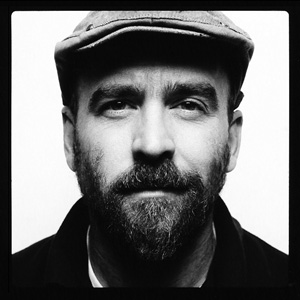Photographer Scott Pasfield toured the U.S., finding unique stories of gay men in every state

A NATION OF GAYS | All 50 states are represented in Scott Pasfield’s photo essay book, including Ken from Maryland (far left), a triad relationship from New York (top), Daniel from California (above) and, of course, a Texan (far right). (All photos copyrighted by Scott Pasfield in his book ‘Gay in America’ (Welcome Books), GayInAmerica.us.
Taking its place alongside such coffee-table books as Tom Atwood’s Kings In Their Castles, David Fields and the late Anderson Jones’ Men Together and Michael Goff and Out Magazine’s Out In America, is now Gay In America (2011: Welcome Books; $45) by Scott Pasfield. Consisting of 140 gay male subjects, all of whom responded to a call to be photographed and tell their unique stories, Gay In America is a colorful portrait of 21st century gay life in all 50 states.
We spoke with the photo essayist, who will be in Dallas this week as part of a nationwide book tour, about his project and what he learned about gay men … and himself.
— Gregg Shapiro
Dallas Voice: Gays are traditionally dog lovers, including myself, so one of the first things that I noticed in the pictures was that there are more than a dozen pictures of men and dogs. Pasfield: And so many dogs got cut from the book! I think there was something like 30 or 35 dogs that I photographed over the course of the project. I was always excited to try and include pets when I could. I think they are such an important part of gay men’s lives. More often than not, if the dogs or pets were around and seemed intrigued by the whole process, I asked if we could try to get them in the shot and most pet owners are happy about that.The dogs by far were the most popular. I think there were five cats, some goats and lots of birds, too.
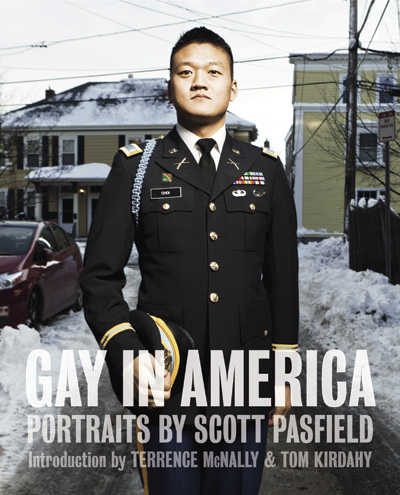 How involved were the subjects in the final decision about which pictures appeared in the book? Not at all. After I did the photoshoots I would always send people my favorites from the shoots shortly after it was done. A lot of times years went by before we actually started making the book from when they had seen my selects. We laid the book out alphabetically and the rhythm and flow of the book was determined a lot of times by that ordering. In some instances, we weren’t able to use a photo that we thought would be the image because of the layout and what shoots preceded and followed that particular one. In other instances, it wasn’t OK picking the best photograph and running with that; it had to work in its setting and in the book’s layout and the rhythm of who was on each side of that spread.
How involved were the subjects in the final decision about which pictures appeared in the book? Not at all. After I did the photoshoots I would always send people my favorites from the shoots shortly after it was done. A lot of times years went by before we actually started making the book from when they had seen my selects. We laid the book out alphabetically and the rhythm and flow of the book was determined a lot of times by that ordering. In some instances, we weren’t able to use a photo that we thought would be the image because of the layout and what shoots preceded and followed that particular one. In other instances, it wasn’t OK picking the best photograph and running with that; it had to work in its setting and in the book’s layout and the rhythm of who was on each side of that spread.
Reading Ken from Maryland’s story, it’s understandable why he got a few more pages to tell his story. What came first in the process, the photos or the subjects’ stories? I decided who to photograph based on their story. They had to write the story to me as a complete stranger in a way and have that leap of faith and honesty to share that. That had a lot to do with why I picked them, it really wasn’t trying to come up with the story after the photo shoot. Their story had to ring true to me and it became very clear right away who was right for the book and who wasn’t. It hit me like over the head like a ton of bricks. This person was being so honest and their story is so wonderful and I haven’t heard anything like it before, therefore I’m going to go photograph them. I had that knowledge walking in to the photo shoot, I had the story in mind, I knew what the photo should look like in my head a little bit or what I thought it should look like. In reality it didn’t often end up looking like that, but having that knowledge beforehand of who they were and what they were willing to share and how that might help others dictated how I approached them photographically.
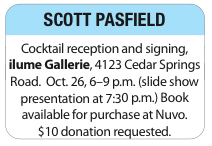 Of the 140 men in the book, five are from Alaska and seven from Georgia (three from Atlanta), but only one from Illinois, for example. How did you settle on the geography? The stories really dictated who I picked so as long as every state was represented at least once, I felt that I could move on to another state. But when I was really torn in terms of stories and who to include, I would often include them both because I couldn’t decide at that point who was right and wrong. And when I felt so strongly about two different people in the same city, I would photograph them both thinking that in the end the editor might narrow that choice down. As was often the case, both subjects same city ended up making it in the book and the editors really enjoyed the comparative stories in the same city. You would think that some places, like Chicago, would be a very easy place but for some reason it wasn’t. People didn’t reach out to me in the same way. I had a feeling that if something was meant to be it was meant to be and I wasn’t going to kill myself trying to find people or persuade people to be in my book because I needed somebody else from Chicago. Many times I thought, “Why is it so difficult to find someone in New Orleans?” I went to New Orleans three times looking for that perfect person and couldn’t find them ever. It was a very interesting process. I just didn’t want to question it so much and said I’m just going to move forward and just try to pick the most interesting story and not really think about where people should be or what geography should be more represented. I looked at it from an interesting standpoint to say, “Wow, so many Alaska and Maine guys.” I had no idea I would be blown away by the amazing gay men in Maine. So many wrote me the most wonderful stories and I picked five and I could have picked 20.
Of the 140 men in the book, five are from Alaska and seven from Georgia (three from Atlanta), but only one from Illinois, for example. How did you settle on the geography? The stories really dictated who I picked so as long as every state was represented at least once, I felt that I could move on to another state. But when I was really torn in terms of stories and who to include, I would often include them both because I couldn’t decide at that point who was right and wrong. And when I felt so strongly about two different people in the same city, I would photograph them both thinking that in the end the editor might narrow that choice down. As was often the case, both subjects same city ended up making it in the book and the editors really enjoyed the comparative stories in the same city. You would think that some places, like Chicago, would be a very easy place but for some reason it wasn’t. People didn’t reach out to me in the same way. I had a feeling that if something was meant to be it was meant to be and I wasn’t going to kill myself trying to find people or persuade people to be in my book because I needed somebody else from Chicago. Many times I thought, “Why is it so difficult to find someone in New Orleans?” I went to New Orleans three times looking for that perfect person and couldn’t find them ever. It was a very interesting process. I just didn’t want to question it so much and said I’m just going to move forward and just try to pick the most interesting story and not really think about where people should be or what geography should be more represented. I looked at it from an interesting standpoint to say, “Wow, so many Alaska and Maine guys.” I had no idea I would be blown away by the amazing gay men in Maine. So many wrote me the most wonderful stories and I picked five and I could have picked 20.
More than a few times in the book, there are men who say that they “happen to be gay.” What do you think that says about being gay in America? I think so many people in society want gay men to clarify themselves or distinguish themselves from the rest of society nearly by that one sexual trait: “I’m gay therefore that defines me.” I think so many gay men when asked what truly defines you as a person and what wisdom would you like to share with young kids who are struggling with being gay or closeted adults, a lot of them have that response. “I am so-and-so of a person. I have these interests and I went through this and I overcame it and I just happen to be gay. That’s not the whole reason why I went through all of these things,” even though at face value it might seem that for a lot of people. People struggle because they’re gay. So I think when asked and pressed on that issue a lot of people say, “You know I struggled with everything, but it’s not all based on me being gay.”
How different do you think this book would have been if you’d done it 10 or 20 years ago? The Internet played a big part in how I found people. It would have been much more difficult to find them. The thing that surprised me the most is the regularness of all these guys. I think most outspoken gay men and all facets of the LGBT community are those people who defined themselves very much by being gay and they have that issue that they really want to share with the world. They’re very outspoken. I think the type of men I was looking for aren’t as outspoken as a lot of those advocates are. That difficulty in finding them was made so much easier by the Internet. Ten, maybe 20 years ago, I’m not quite sure how I would have found the same men because they’re not going to gay community centers, most of them. They’re not out at a lot of gay bars or clubs in urban areas. I think that that’s one of the major differences doing it now. That I was really able to connect with a lot of gay men that are for the most part under the radar and what most see of the gay community.
Do you feel like you learned things about gay men that you didn’t know before? I talk a lot in the introduction about why I did the book and the healing and the personal issues that I had to work out with my upbringing and my father with his being born again and condemning my lifestyle. Really a lot of the reason for the book was to search out that wisdom from gay men in determining how to live a happy fulfilled life and not to let other people’s views of homosexuality affect your being. I think that having a disapproving parent or friends or family who are so against what it means to be gay really affects gay men and gay people in general. I was able to learn from them just how not to let all of that get to you, how to be happy, how to come to some realization that you are gay not for a lot of the reasons that society tells you you are. To understand from these men that it’s just a part of who you are and how you can live your life and go about being a happy, fulfilled person and provide in your community and all of those things. To give back in a way and still love yourself and still love the way God made you. I think so much of the pain that so many gay people experience is through those opinions of the people we love and when they’re telling you that it is so wrong. It is a very hard thing to overcome. I think the more we share our stories and we learn how other people overcome those same things, it can help us all understand what it does means to be gay in America a little better.
Would you say you also learned something about yourself in the process of creating this project? Oh, very much, yeah, in terms of not questioning it so much anymore. There was always a little part of me that felt it is wrong just because my father disapproved so much of it until he died. That was something very difficult for me to get over. The intelligent person inside of me told me that it wasn’t a choice I had made and I was sinning and I wasn’t going to go to hell. And the wisdom that these other men brought to me in their lives and their loves and how they related to other people and how they overcame tragedy and adversity in their lives made me realize I’m doing okay and I’m a good person and I’m like everybody else. You can’t that away from me just because I like the same sex; that is so ridiculous.
……………………………….
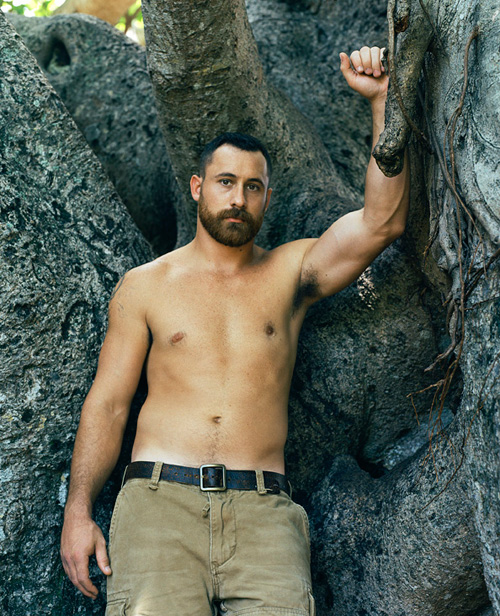 Blake Little, bear hunter
Blake Little, bear hunter
You could say that photographer Blake Little is more used to men out of their clothes than in them. With a focus on the nude figure, Little has made a strong and reputable name behind the lens. Not just nudes, either: Top tier celebrities Josh Duhamel and Adrien Brody have posed for him to grace the covers of magazines like USA Weekend and Cigar Aficionado.
But what Little himself is really drawn to are everyday, blue-collar guys. With that in mind, he published The Company of Men.
“I wanted to take photographs that captured the strength and integrity of each individual, distilling exactly what I find compelling about men into a photograph without showing everything,” he told Wessel and O’Connor Fine Art, who displayed his work as an exhibit in 2008.
Starting with friends, Little explored this facet of masculinity that he felt wasn’t shown elsewhere — in particular, a gay masculinity he hadn’t seen portrayed in any media, which you can see for yourself at his Dallas appearance later this week.
“I wanted to document a particular type of masculine gay male that I appreciated and related to,” he says, “an alternative to stereotypes or what is usually seen as the physical ideal of a man in the mainstream.”
And he achieves it in heaps. The Company of Men is an outstanding collection of photographs that idealize the everyman and yet still exudes a high sensual characteristic. Simply, each man photographed is hot, but it’s their lack of touch up or waxing that makes them so. Little strived to capture each in their own element, at their own house and in natural light.
Not surprisingly for the photographer, he created well-constructed shots that are both artistic and, let’s face it, sexy with the best looking bears this side of the National Geographic.
— Rich Lopez
This article appeared in the Dallas Voice print edition October 21, 2011.
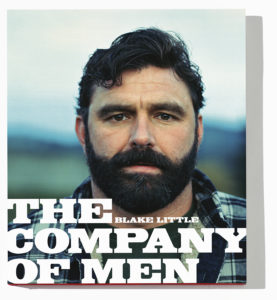
Blake Little book signing of The Company of Men.
NUVO, 3900 Cedar Springs Road.
Oct. 27 at 5 p.m.
NUVODallas.com.


